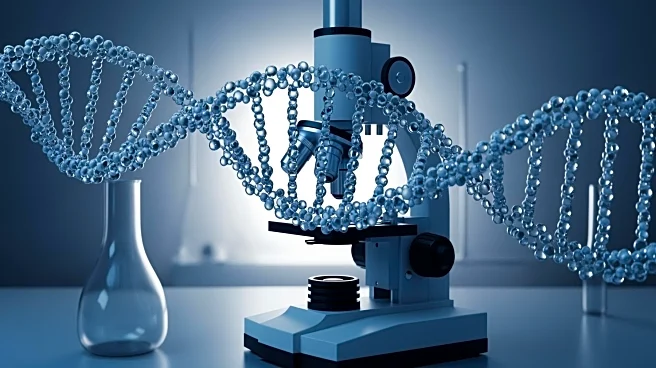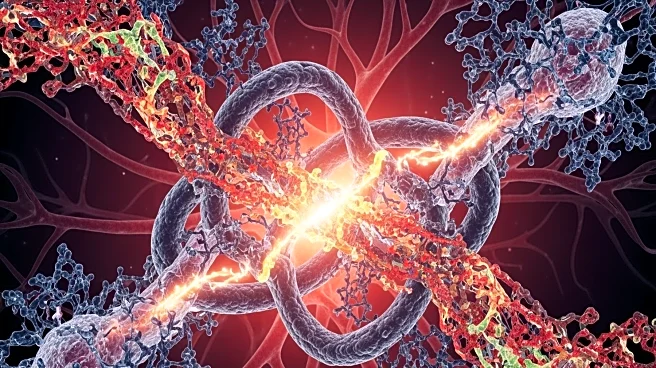What's Happening?
A recent study has explored the DNA methylation patterns of neuroendocrine neoplasms (NEN) to trace their origins, particularly focusing on hepatic NEN. The research involved analyzing 212 NEN tissue samples
from various organ sites, including the liver, pancreas, stomach, and lungs. The study aimed to differentiate primary hepatic NEN from liver metastases of known primary NEN by examining DNA methylation profiles. The findings revealed distinct DNA methylation patterns that could help identify the tissue of origin for NEN, which is crucial for accurate diagnosis and treatment planning.
Why It's Important?
This study is significant as it provides a potential method for accurately diagnosing the origin of neuroendocrine tumors, which can be challenging due to their diverse presentations and origins. By understanding the DNA methylation patterns, healthcare providers can better determine the primary site of the tumor, leading to more targeted and effective treatment strategies. This advancement could improve patient outcomes and reduce the incidence of misdiagnosis, which is critical in managing cancer effectively.
What's Next?
The study suggests further research and validation of these findings in larger, independent cohorts to confirm the utility of DNA methylation profiling in clinical settings. If successful, this approach could be integrated into routine diagnostic procedures for neuroendocrine tumors, potentially transforming the current diagnostic landscape. Additionally, the development of more sophisticated machine learning algorithms to enhance prediction accuracy could be a focus for future studies.
Beyond the Headlines
The implications of this study extend beyond immediate clinical applications. It highlights the growing importance of epigenetic profiling in cancer diagnostics, which could lead to broader applications in other cancer types. Furthermore, the study underscores the potential of personalized medicine, where treatments are tailored based on the genetic and epigenetic characteristics of individual tumors, paving the way for more precise and effective cancer therapies.











